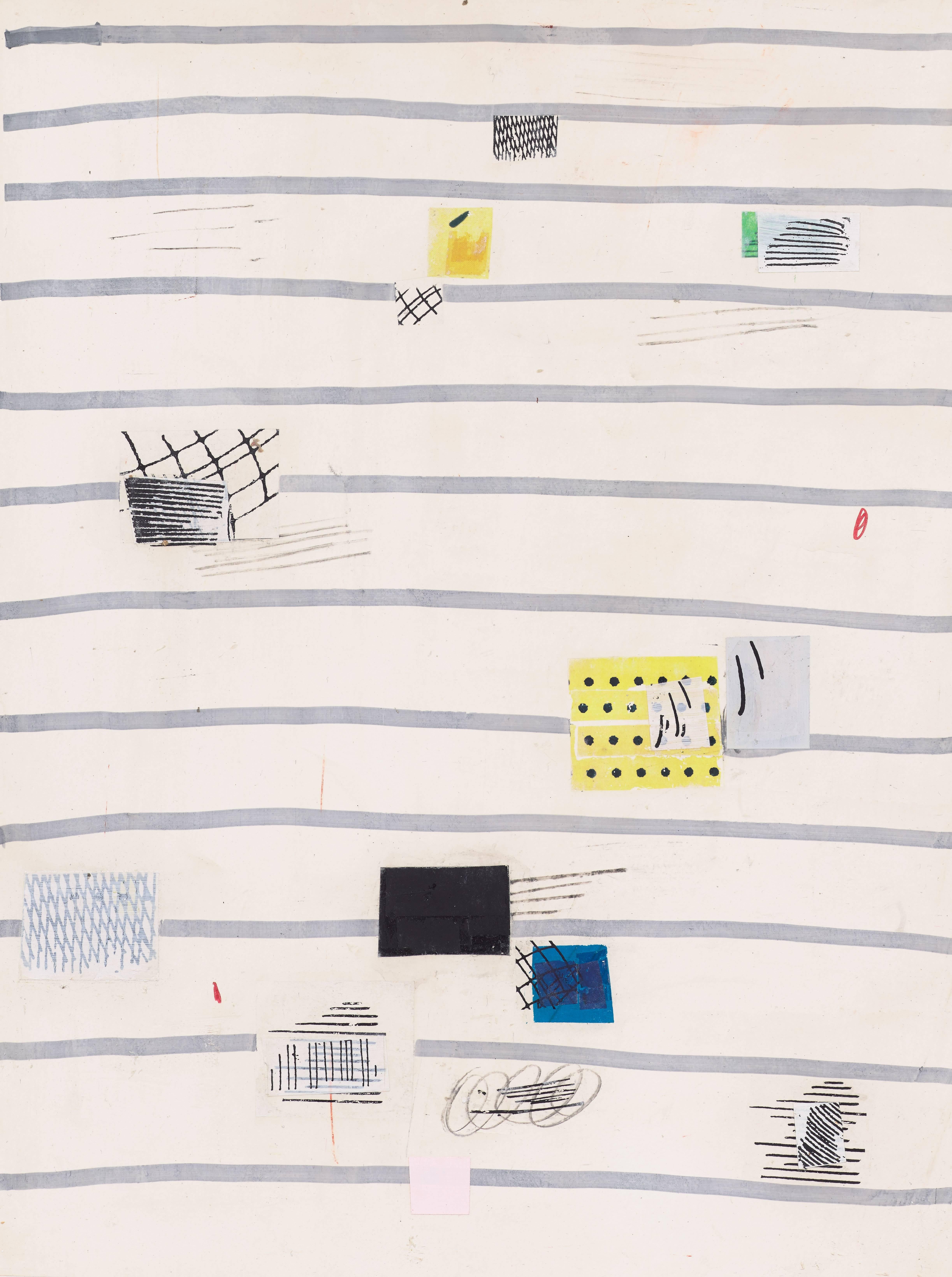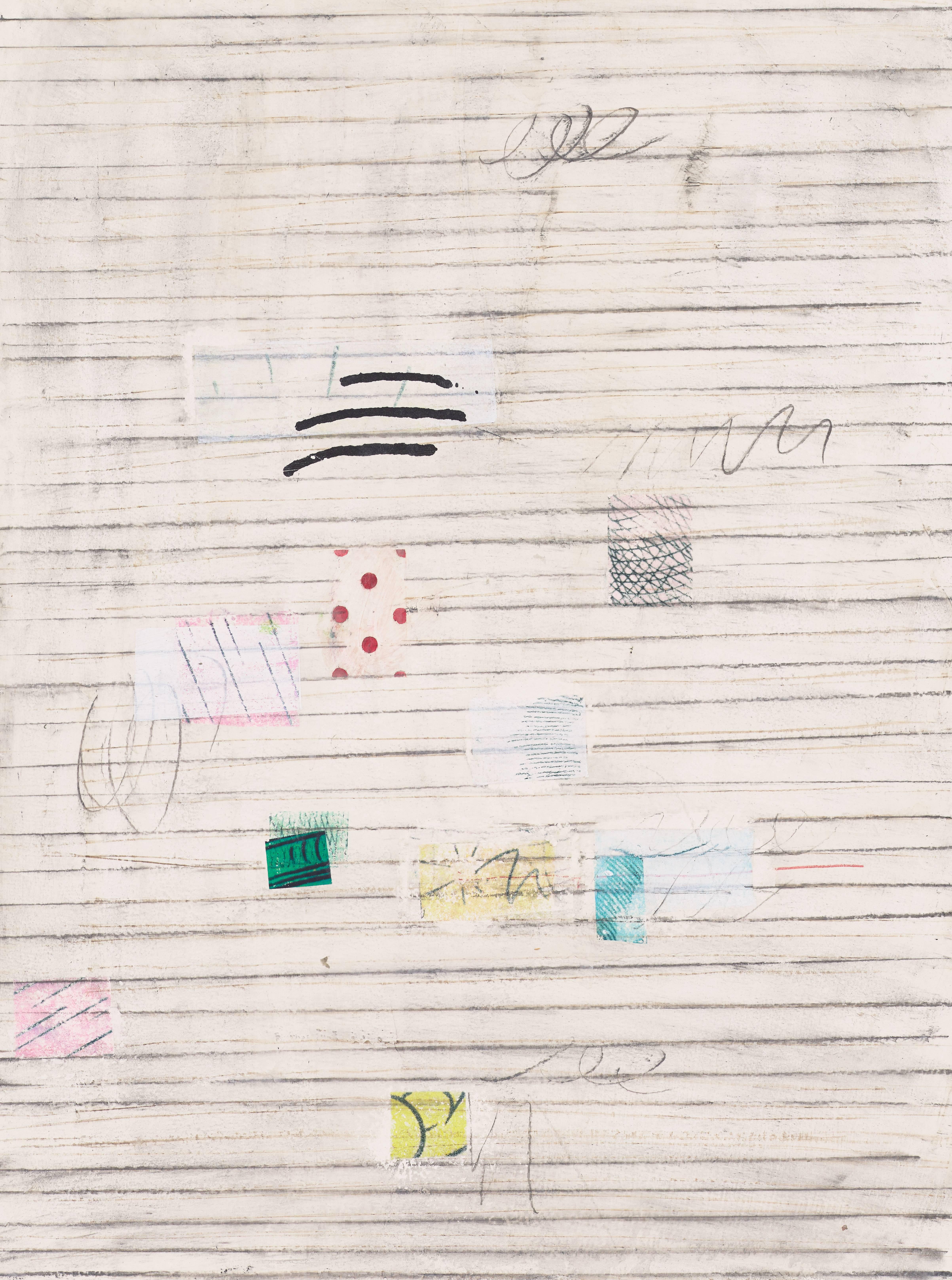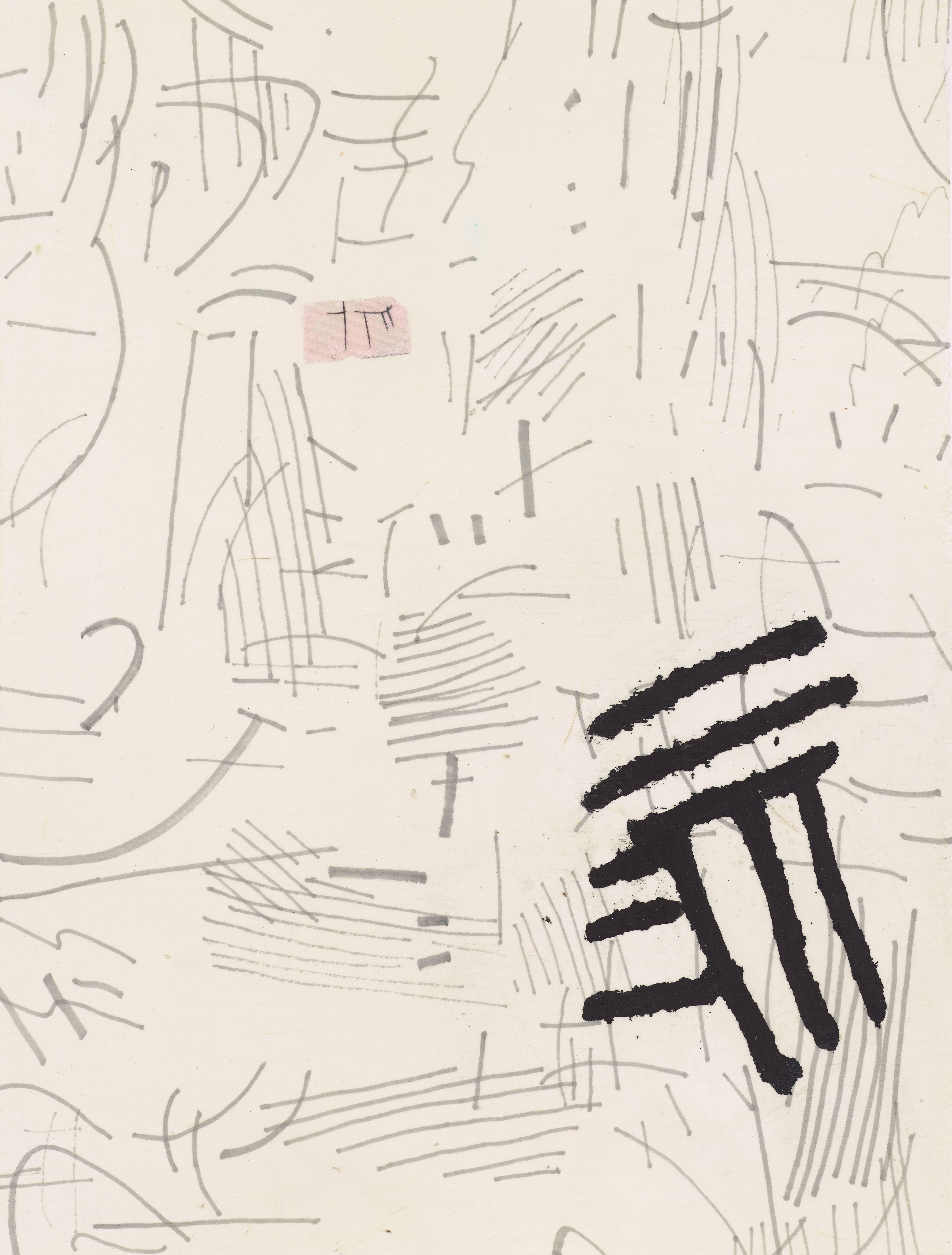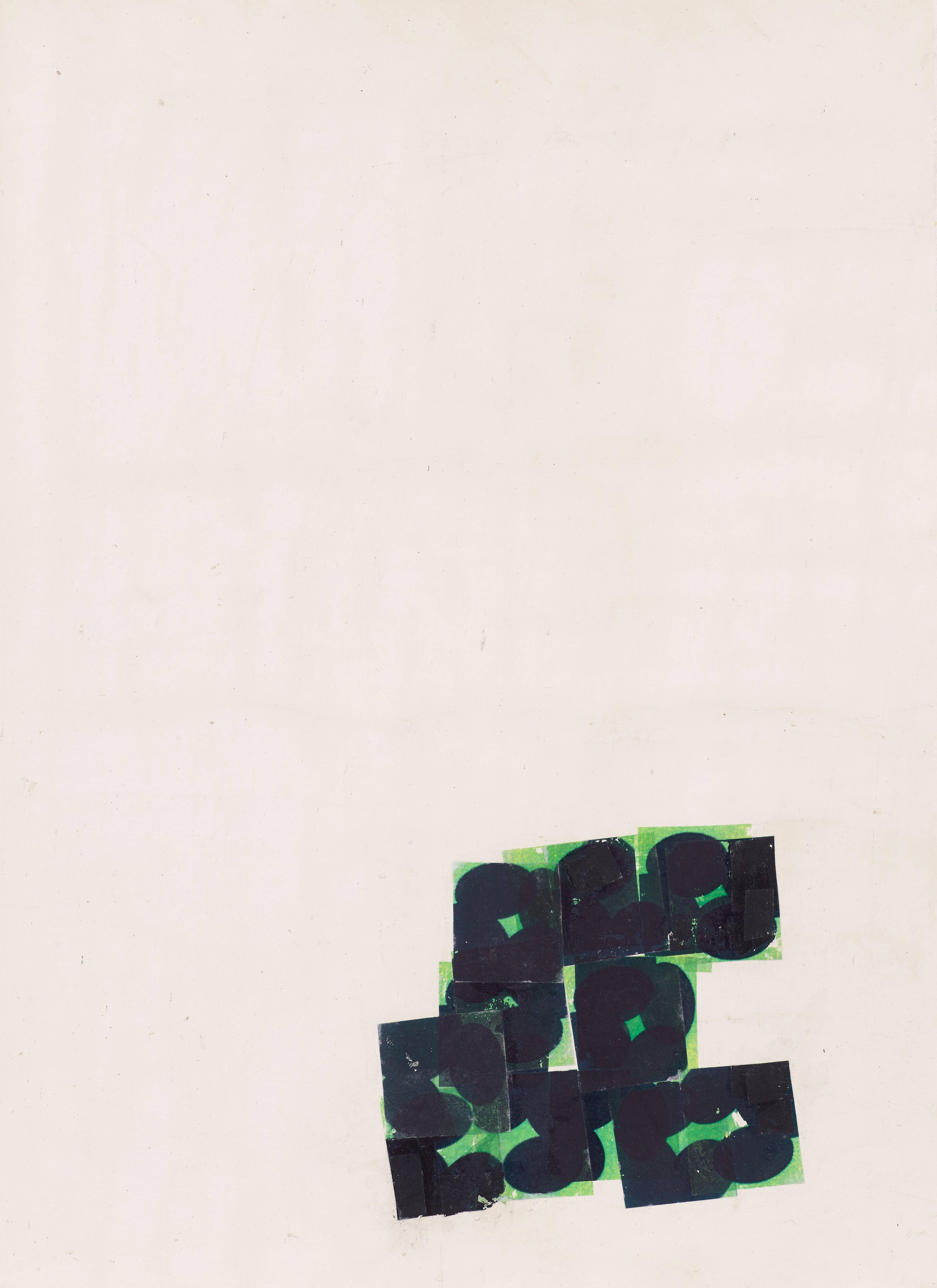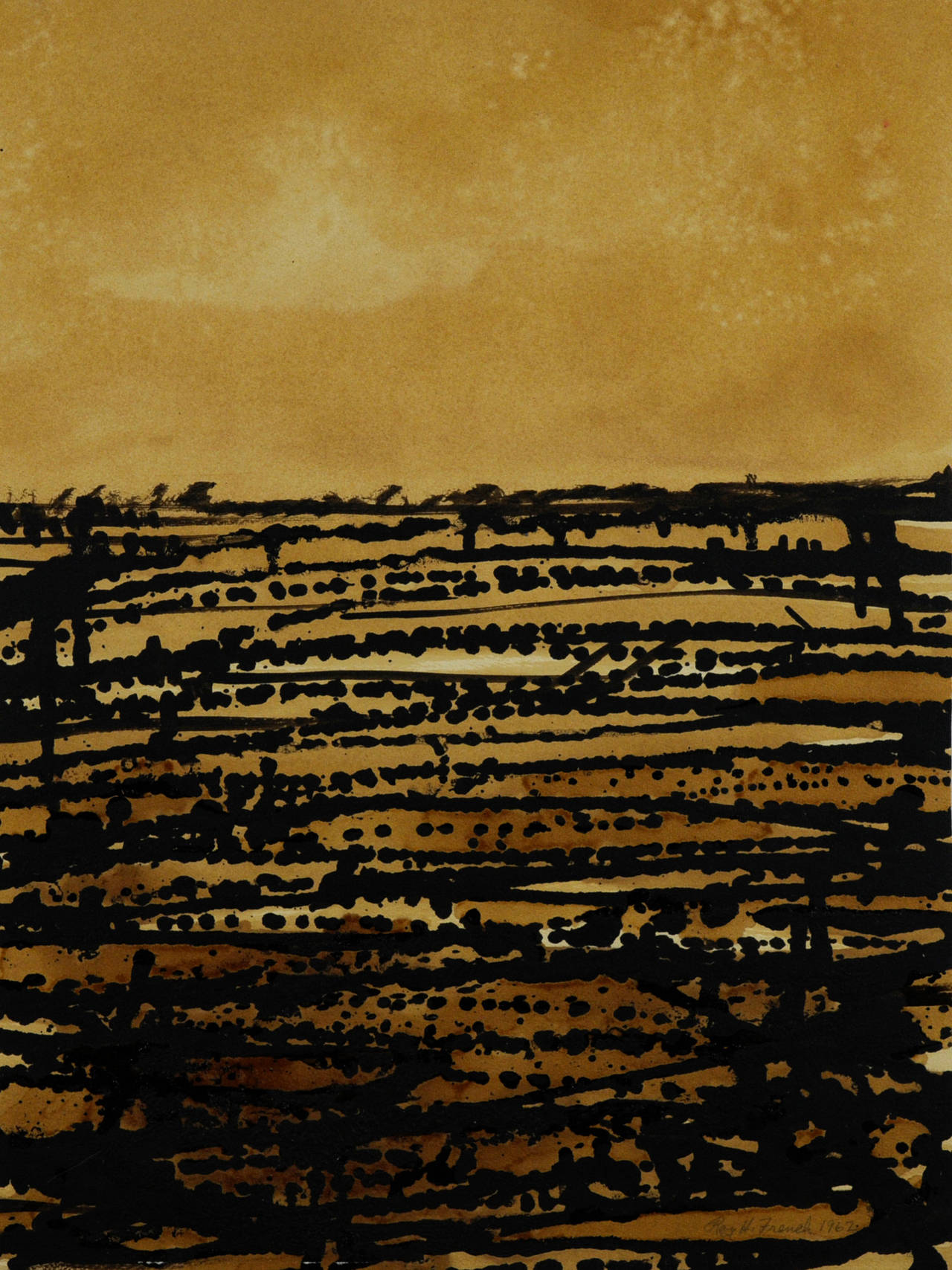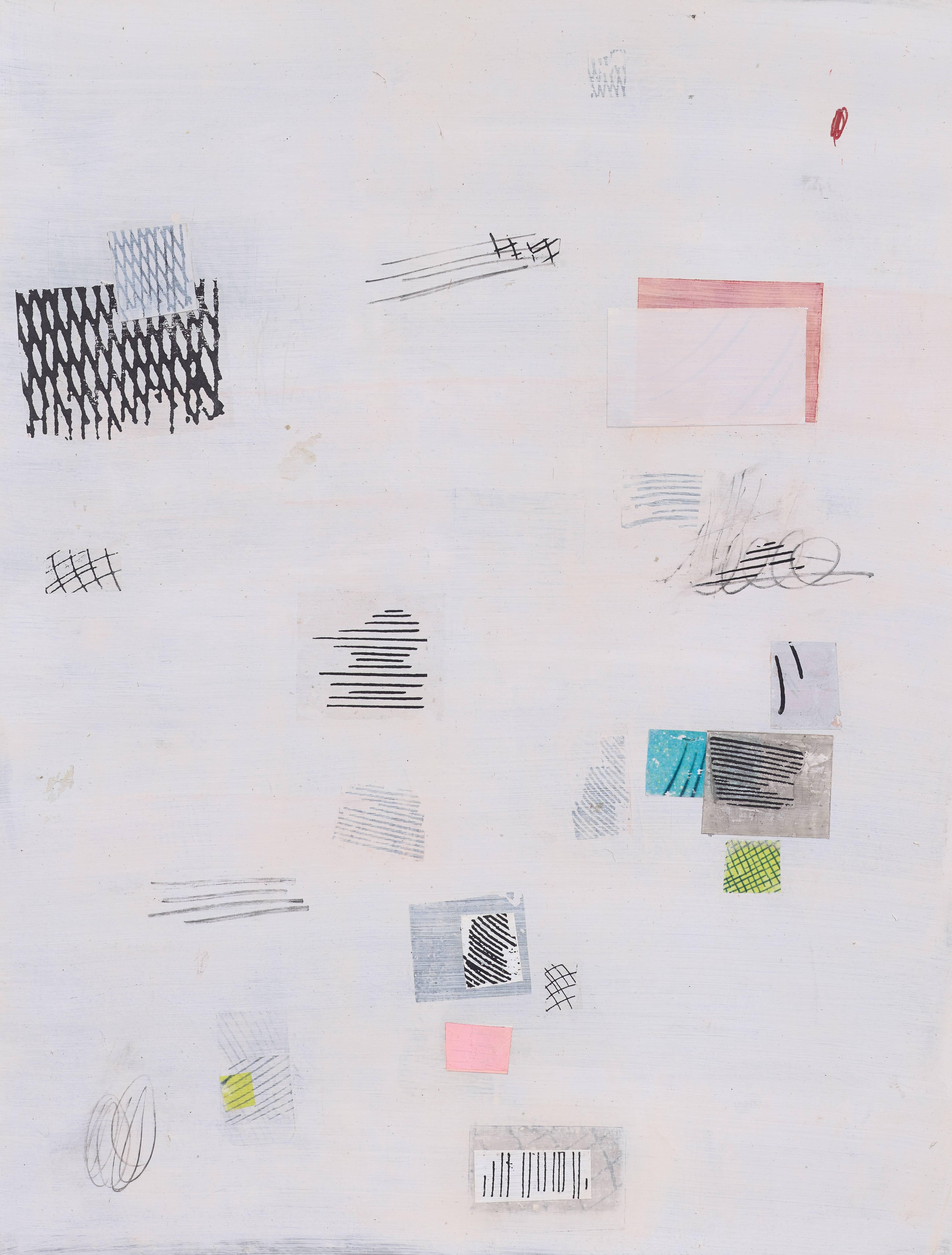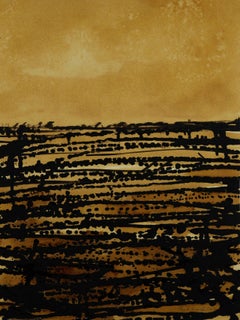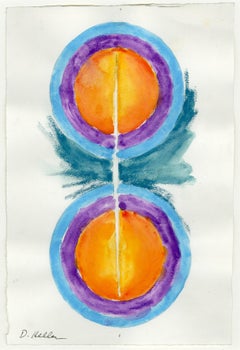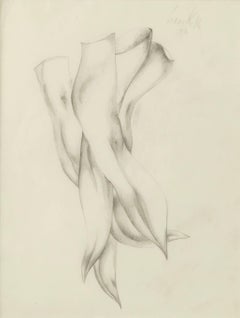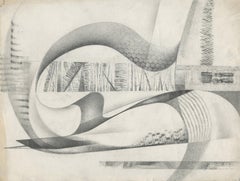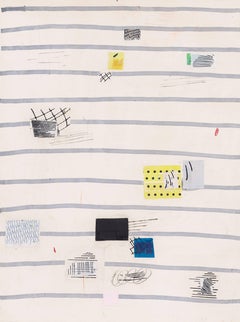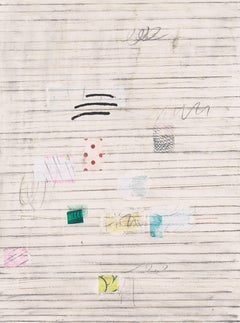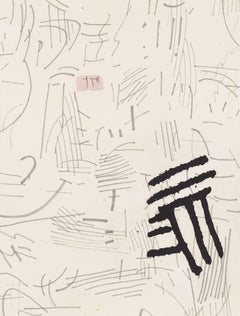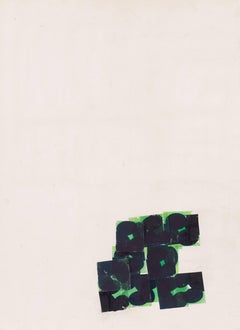Want more images or videos?
Request additional images or videos from the seller
1 of 6
Fannie HillsmithUntitled1967
1967
$2,400
£1,810.22
€2,090.82
CA$3,362.57
A$3,738.98
CHF 1,957.42
MX$45,672.34
NOK 24,596.95
SEK 23,138.36
DKK 15,607.84
About the Item
Untitled
Collage and crayon drawing, 1967
Signed and dated lower center (see photo)
Condition: Small imperfections from the creative process
Small tear on the left sheet edge (repaired)
Adhesive residue on verso in six places where the work was mounted by the artist, since removed with resulting tiny thin spots visible only on verso
Image/sheet size: 12 x 9 inches
Provenance: Distinguished Midwest Private Collection
Note: Hillsmith studied under William Zorach and Yasuo Kuniyoshi at the Art Students League. Early in her career, she exhibited at Jimmy Ernst’s Norlyst Gallery and at Peggy Guggenheim’s Art of the Twentieth Century. In the 1950’s-60’s she exhibited at the Charles Egan Gallery and Peridot Gallery. She studied with Stanley William Hayter at Atelier 17 and also taught at the famous Black Mountain College. Hill smith characterized with work as “Cubism with an American feel.”
Fannie Hillsmith
From Wikipedia, the free encyclopedia
Born 1911, Boston, Massachusetts
Died July 27, 2007, Jaffrey, New Hampshire
)
Fannie Hillsmith (1911 – July 27, 2007) was an American cubist painter from Boston who during a long career, mostly based in New York City, developed a style of Cubism which combined traditional Cubist motifs with what she called "an early American feeling."
Personal life
Fannie Hillsmith was born in Boston, Massachusetts in 1911. Her grandfather, Frank Hill Smith, was a painter, as well as one of the founders of the Boston Museum School. Hillsmith began sketching at an early age. She enrolled in the Boston Museum School in 1930, and graduated four years later.
Hillsmith married Gordon Welchman in 1958. Welchman was an American-English mathematician who worked at Bletchley Park and worked on code-breaking alongside Alan Turing. The couple met while Hillsmith was on a one-year scholarship from the Boston Museum of Art to study in Europe. The couple divorced in 1970.
Career
Hillsmith moved from Boston to New York City in 1934. Once in New York, she took an interest in avant-garde art through her studies and gradually developed an abstract style. Hillsmith studied under such teachers as William Zorach and Yasuo Kuniyoshi for one year while at the Art Students League. She went on to study at New York University at the A. E. Gallatin Collection.
Fannie Hillsmith held her first art show in New York at the Norlyst Gallery, owned by Jimmy Ernst, in 1943. Her work was included in Abstract and Surrealist Art in America by Sidney Janis, published in 1944.
Hillsmith displayed her work in three shows at the Art of This Century Gallery in Manhattan, which was owned by Peggy Guggenheim. In 1953, she exhibited Interior in Tan in the show Nine Women Painters at Bennington College. She also exhibited at a series of shows at the Peridot Gallery and the Charles Egan Gallery during the 1950s and 1960s.
Hillsmith began working at Atelier 17, which was an intaglio printmaking workshop owned by Stanley William Hayter, in 1946. She worked at Aterlier alongside noted artists such as Yves Tanguy, Miró and Jacques Lipchitz. She became very close friends with Harriet Berger Nurkse and Alicia Legg. Hillsmith also taught briefly at Black Mountain College, located in Asheville, North Carolina.
Her most famous painting was the Molasses Jug, an oil painting completed in 1949. The artwork is held by the Flint Institute of Art. Another notable piece is The Table–Study No. 5, painted in 1947.
Fannie Hillsmith actively painted Cubist art for nearly sixty years. She had been represented by an art gallery in Manhattan's SoHo neighborhood since 1990. She continued painting every day until January 2007.
Hillsmith died in her sleep at her home in Jaffrey, New Hampshire on July 27, 2007.
Artist style
Hillmsith's style of Cubism combined traditional Cubist motifs with what she called "an early American feeling." She was influenced by such painters as Picasso, Gris and Miró, according to The New York Times.
She is quoted as saying, “I am interested in abstract art, but I am also interested in the message—the problem is to convey feeling with the impact of the abstract.”
Courtesy of Wikipedia
- Creator:Fannie Hillsmith (1911, American)
- Creation Year:1967
- Dimensions:Height: 12 in (30.48 cm)Width: 9 in (22.86 cm)
- Medium:
- Movement & Style:
- Period:
- Condition:
- Gallery Location:Fairlawn, OH
- Reference Number:Seller: FA108921stDibs: LU14016133412
About the Seller
5.0
Recognized Seller
These prestigious sellers are industry leaders and represent the highest echelon for item quality and design.
Platinum Seller
Premium sellers with a 4.7+ rating and 24-hour response times
Established in 1978
1stDibs seller since 2013
808 sales on 1stDibs
Typical response time: <1 hour
Associations
International Fine Print Dealers Association
- ShippingRetrieving quote...Shipping from: Fairlawn, OH
- Return Policy
Authenticity Guarantee
In the unlikely event there’s an issue with an item’s authenticity, contact us within 1 year for a full refund. DetailsMoney-Back Guarantee
If your item is not as described, is damaged in transit, or does not arrive, contact us within 7 days for a full refund. Details24-Hour Cancellation
You have a 24-hour grace period in which to reconsider your purchase, with no questions asked.Vetted Professional Sellers
Our world-class sellers must adhere to strict standards for service and quality, maintaining the integrity of our listings.Price-Match Guarantee
If you find that a seller listed the same item for a lower price elsewhere, we’ll match it.Trusted Global Delivery
Our best-in-class carrier network provides specialized shipping options worldwide, including custom delivery.More From This Seller
View AllUntitled
By Ray H. French
Located in Fairlawn, OH
Signed and dated "1962" by the artist lower right.
Mixed media on heavy paper.
Done for a show to fund a trip to Italy.
Category
1960s Abstract Abstract Drawings and Watercolors
Materials
Ink, Mixed Media
Untitled
By Dorothy Heller
Located in Fairlawn, OH
Untitled
Watercolor on paper, 1990
Signed lower left corner
Provenance: Gift of the Artist to one of hr patrons
Distinguished Midwest Private Collection
Conditi...
Category
1990s Abstract Abstract Drawings and Watercolors
Materials
Watercolor
Untitled
By Leon Kelly
Located in Fairlawn, OH
Untitled
Graphite on paper, 1930
Signed and dated upper right (see photo)
Exhibited: Francis Nauman, Leon Kelly: Draftsman Extraordinaire, New York, April 4 - May 23, 2014. (label)
C...
Category
1920s Abstract Expressionist Abstract Drawings and Watercolors
Materials
Pencil
$2,500
Untitled Abstraction
By Medard P. Klein
Located in Fairlawn, OH
Untitled Abstraction
Graphite on paper. c. 1946
Unsigned
Provenance: Estate of the Artist
Inherited by his neighbor/caregiver
Condition: Staining at corners
...
Category
1940s Abstract Abstract Drawings and Watercolors
Materials
Graphite
Untitled
By Leon Kelly
Located in Fairlawn, OH
Untitled
Pastel on paper, 1922
Signed with the artist's initials in pencil
Provenance: Estate of the artist
Francis M. Nauman (label)
Private collection, NY
A very early abstract/cubist work by Kelly. Created while the artist was studying with Arthur Carles in Philadelphia.
Leon Kelly (October 21, 1901 – June 28, 1982) was an American artist born in Philadelphia, PA. He is most well known for his contributions to American Surrealism, but his work also encompassed styles such as Cubism, Social Realism, and Abstraction. Reclusive by nature, a character trait that became more exaggerated in the 1940s and later, Kelly's work reflects his determination not to be limited by the trends of his time. His large output of paintings is complemented by a prolific number of drawings that span his career of 50 years. Some of the collections where his work is represented are: The Metropolitan Museum in New York, The Whitney Museum of American Art, the Museum of Modern Art, the Philadelphia Museum of Art, and Boston Public Library.
Biography
Kelly was born in 1901 at home at 1533 Newkirk Street, Philadelphia, PA. He was the only child of Elizabeth (née Stevenson) and Pantaleon L. Kelly. The family resided in Philadelphia where Pantaleon and two of his cousins owned Kelly Brothers, a successful tailoring business. The prosperity of the firm enabled his father to purchase a 144-acre farm in Bucks County PA in 1902, which he named "Rural Retreat" It was here that Pantaleon took Leon to spend every weekend away from the pressures of business and from the disappointments in his failing marriage. Idyllic and peaceful memories of the farm stayed with Leon and embued his work with a love of nature that emerged later in the Lunar Series, in Return and Departure, and in the insect imagery of his Surrealist work. "If anything," he once said,"I am a Pantheist and see a spirit in everything, the grass, the rocks, everything."
At thirteen, Leon left school and began private painting lessons with Albert Jean Adolphe, a teacher at the School of Industrial Art (now the University of the Arts) in Philadelphia. He learned technique by copying the works of the old masters and visiting the Philadelphia Zoo, where he would draw animals. Drawings done in 1916 and 1917 of elephants, snakes and antelope, as well as copies of old master paintings by Holbein and Michelangelo, heralded an impressive emerging talent. In 1917, he studied sculpture with Alexander Portnoff but his studies came to an abrupt halt with the start of World War I. Being too young to enlist, he joined the Quartermaster Corp at the Army Depot in Philadelphia, where he served for more than a year loading ships with supplies and, along with other artists, working on drawings for camouflage.
By 1920, the family's fortunes drastically changed. His father's business had failed due to the introduction of ready made clothing and his marriage, unhappy from the beginning, dissolved. Broken by circumstance Pantaleon left Philadelphia to begin a wandering existence looking for work leaving Leon to support his mother and grandmother. He found a job in 1920 at the Freihofer Baking Company where he worked nights for the next four years. Under these circumstances Leon continued to develop his skills in drawing and painting and learned of the revolutionary developments in art that were taking place in Paris.
During the day he was granted permission to study anatomy at the Philadelphia School of Osteopathy where he dissected a cadaver and perfected his knowledge of the human figure. He also met and studied etching with Earl Horter, a well known illustrator, who had amassed a significant collection of modern art which included work by Brancusi, Matisse, and Cubist works by Picasso and Braque. Among the artists around Horter was Arthur Carles, a charismatic and controversial painter who taught at the Pennsylvania Academy of Fine Arts. Leon enrolled in the Academy in 1922, becoming what Carles described as, "his best student".
In the next three years Leon work ranged from academic studies of plaster casts, to pointillism, to landscapes of Fairmount Park in Philadelphia, as well as a series of pastels showing influences from Matisse to Picasso. Clearly influenced by Earl Horter's collection and Arthur Carles he mastered analytical cubism in works such as The Three Pears, 1923 and 1925 experimented with Purism in Moon Behind the Italian House. In 1925 Kelly was awarded a Cresson Scholarship and on June 14 he left for Europe.
Paris
The first trip to Europe lasted for approximately three and a half months and introduced Kelly to a culture and place where he felt he belonged. Though he returned to the Academy in the Fall, he left for Europe again a few months later to begin a four-year stay in Paris. He moved into an apartment at 19 rue Daguerre in Paris and began an existence intellectually rich but in creature comforts, very poor. "I kept a cinderblock over the drain in the kitchen sink to keep the rats out of the apartment" he once explained. He frequented the cafes making acquaintances with Henry Miller, James Joyce and the critic Félix Fénéon as well as others. His days were split between copying old master paintings in the Louvre and pursuing modernist ideas that were swirling through the work of all the artists around him. The Lake, 1926 and Interior of the Studio, 1927, now in the Newark Museum.
Patrons during this time were the police official Leon Zamaran, a collector of Courbets, Lautrecs and others, who began collecting Kelly's work. Another was Alfred Barnes of the Barnes Collection in Philadelphia.
In 1929 Kelly married a young French woman, Henriette D'Erfurth. She appears frequently in paintings and drawings done between 1928 and the early 1930s.
Philadelphia
The stock market crash of 1929 made it impossible to continue living in Paris and Kelly and Henriette returned to Philadelphia in 1930. He rented a studio on Thompson Street and began working and participating in shows in the city's galleries. Work from 1930 to 1940 showed continuing influences and experimentation with the themes and techniques acquired in Paris as well as a brief foray into Social Realism. The Little Gallery of Contemporary Art purchased the Absinthe Drinker...
Category
1920s Abstract Abstract Drawings and Watercolors
Materials
Pastel
$4,000
Untitled Abstraction
By John von Wicht
Located in Fairlawn, OH
Untitled Abstrraction
Gouache, watercolor and pigments on paper, c. 1960
Signed lower right in pencil (see photo)
Image: 17 x 22 inches
Sheet: 25 1/4 x 29 3/4 inches
Frame: 25 1/4 x ...
Category
1960s Abstract Expressionist Abstract Drawings and Watercolors
Materials
Watercolor
You May Also Like
Untitled
By Margo Margolis
Located in Wellesley, MA
"Untitled," Flashe on Paper, 30 x 22 Inches
A highly sophisticated series of large and small paintings, drawings and monoprints by Margo Margolis, NY artist who recently retired as ...
Category
2010s Abstract Abstract Drawings and Watercolors
Materials
Other Medium
Untitled
By Margo Margolis
Located in Wellesley, MA
"Untitled" Flashe and Charcoal on Paper, 30 x 22 Inches
A highly sophisticated series of large and small paintings, drawings and monoprints by Margo Margolis, NY artist who recently...
Category
2010s Abstract Abstract Drawings and Watercolors
Materials
Other Medium
Untitled
By Margo Margolis
Located in Wellesley, MA
"Untitled," Flashe on Paper, 30 x 22 Inches
A highly sophisticated series of large and small paintings, drawings and monoprints by Margo Margolis, NY artist who recently retired as...
Category
2010s Abstract Abstract Drawings and Watercolors
Materials
Other Medium
Untitled
By Margo Margolis
Located in Wellesley, MA
"Untitled," Flashe on Paper, 30 x 22 Inches
A highly sophisticated series of large and small paintings, drawings and monoprints by Margo Margolis, NY artist who recently retired as ...
Category
2010s Abstract Abstract Drawings and Watercolors
Materials
Other Medium
Untitled
By Margo Margolis
Located in Wellesley, MA
"Untitled," Flashe on Paper, 30 x 22 Inches
A highly sophisticated series of large and small paintings, drawings and monoprints by Margo Margolis, NY artist who recently retired as ...
Category
2010s Abstract Abstract Drawings and Watercolors
Materials
Other Medium
Untitled
By Margo Margolis
Located in Wellesley, MA
"Untitled," Abstraction, Pop Sensibility, Flashe and Charcoal on Paper, 30 x 22 Inches. Framed in White Wood.
This painting on paper has a very sophisticated sensibility in th...
Category
2010s Abstract Abstract Drawings and Watercolors
Materials
Mixed Media
